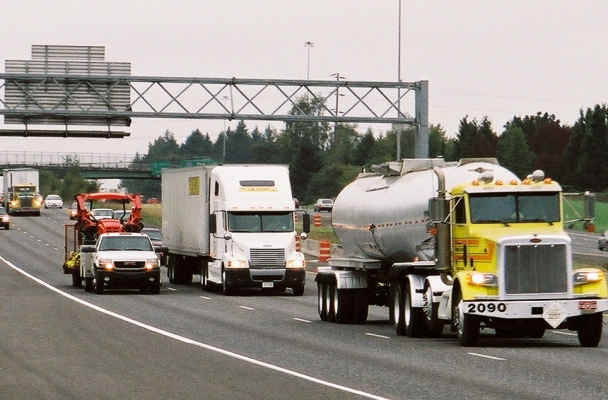New report shows a better way to track freight over highways

Freight transportation is a vital component of Oregon’s economy, and many expect shipments to nearly double in the next decade. Making informed decisions to better manage the freight transportation system requires monitoring freight movement and freight transportation performance. Because most of that freight moves by truck, this means better understanding those trucks’ movements.
Existing methods for tracking individual trucks can require buying expensive new equipment, however, and raise privacy concerns. In his report, “Exploratory Methods for Truck Re-Identification in a Statewide Network Based on Axle Weight and Axle Spacing Data to Enhance Freight Metrics,” Christopher Monsere investigated an alternative: Using only existing vehicle sensors, is it feasible to reidentify trucks after they have traveled long distances?
Monsere and his research team used data from existing weigh-in-motion stations, which record axle weight and spacing and gross vehicle weight. They then developed and applied algorithms to match truck measurements at separate sites, allowing them to reidentify the same vehicles at other weigh stations.
The team found that the algorithms can match trucks with around 90 percent accuracy, while measuring around 95 percent of the total trucks that cross both stations. The algorithms also can be adjusted to yield greater accuracy by reducing the total number of trucks matched. Matching 40 percent of all trucks crossing both stations will result in 98 percent accuracy, for example. Of course, trucks often stop to refuel or make deliveries, changing their weight in the process. In spite of these challenges, the methods perform well enough to be put into practice.
Using the methods identified in this research can support programs to monitor freight movement over highways. Specifically, it can be used to estimate travel times, travel delays and the trucks’ flow patterns. Doing so is easy, cheap and unobtrusive, as it doesn’t require buying new identification equipment or requiring trucks to carry transponders, both of which can have privacy implications.
Learn more about this project or download the final report.
